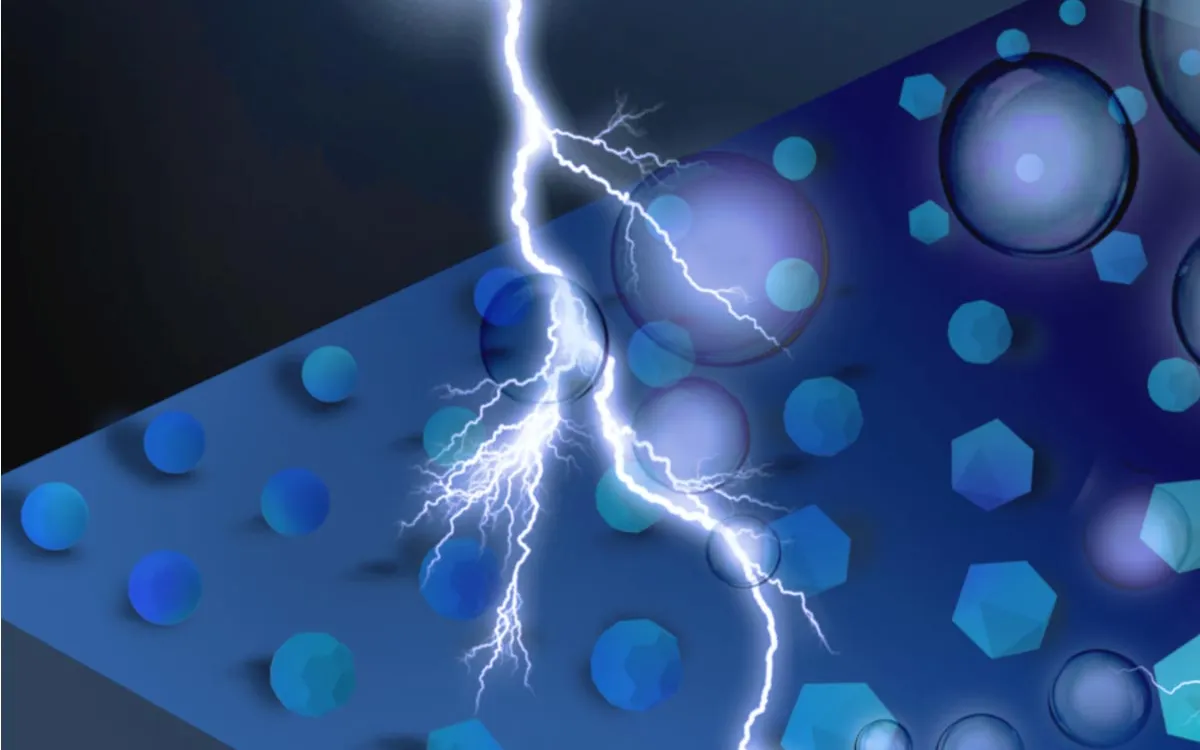
In a significant step towards affordable hydrogen energy, scientists have utilized a groundbreaking nanoparticle “megalibrary” to uncover a low-cost and high-performing alternative to iridium. This discovery not only paves the way for cheaper hydrogen fuel production but also accelerates the search for sustainable energy solutions.
For years, researchers worldwide have sought to replace iridium, a precious and highly expensive metal crucial for producing clean hydrogen fuel. Recently, a team from Northwestern University, collaborating with the Toyota Research Institute (TRI), successfully identified a promising substitute in a remarkably short time frame—just one afternoon—using an innovative tool known as a megalibrary.
The megalibrary, heralded as the world's first nanomaterial “data factory,” is a compact platform housing millions of meticulously designed nanoparticles on a chip no larger than a fingertip. This state-of-the-art tool enabled researchers to efficiently screen various catalysts for hydrogen generation, leading them to a viable candidate that could be scaled up for practical use.
The megalibrary allowed scientists to explore countless combinations of four abundant and inexpensive metals known for their catalytic properties. Through this extensive screening, the team discovered a novel material that not only matched but in some instances surpassed the performance of commercial iridium-based catalysts, all while being significantly cheaper.
This development has profound implications beyond merely reducing the cost of green hydrogen. It also showcases the transformative potential of the megalibrary approach, which could change the landscape of materials discovery across various scientific fields.
Chad A. Mirkin, Northwestern's senior author and primary inventor of the megalibrary, emphasized the tool's power: “We’ve unleashed arguably the world’s most powerful synthesis tool, allowing us to explore the vast number of combinations available to chemists.” He added that this tool is instrumental in addressing the pressing energy sector challenge of finding a substitute for iridium that is more accessible and affordable.
Mirkin, a pioneer in nanotechnology, holds multiple prestigious positions at Northwestern University, including the George B. Rathmann Professor of Chemistry and executive director of the International Institute for Nanotechnology.
As the global community shifts from fossil fuels to renewable energy sources, affordable green hydrogen has become essential. Hydrogen is primarily produced through water splitting, a method that separates water molecules into hydrogen and oxygen using electricity. The oxygen evolution reaction (OER), however, is known to be inefficient, with iridium-based catalysts being the most effective but also costly and scarce.
Iridium is not only rare and expensive—valued at nearly $5,000 per ounce—but its availability as a byproduct of platinum mining poses supply challenges. “There’s not enough iridium in the world to meet all of our projected needs,” cautioned Ted Sargent, co-lead of the study and a professor at Northwestern.
Mirkin's introduction of megalibraries in 2016 was a game-changer for materials discovery. Unlike traditional methods, which are often slow and labor-intensive, megalibraries expedite the identification of optimal compositions, enabling researchers to rapidly pinpoint potential replacements for iridium.
Each megalibrary consists of arrays of tiny pyramid-shaped tips that print individual “dots” containing a designed mix of metal salts. When these salts are heated, they form nanoparticles with specific properties, effectively turning the chip into an army of researchers working simultaneously to uncover new materials.
The recent study employed a chip with an astounding 156 million particles crafted from various combinations of ruthenium, cobalt, manganese, and chromium. A robotic scanner evaluated the performance of these particles in facilitating OER, guiding the researchers to select the most promising candidates for further testing.
Ultimately, a standout composition emerged: a tailored mix of the four metals (Ru52Co33Mn9Cr6 oxide) that exhibited superior activity and stability compared to traditional iridium catalysts. “Our catalyst has a higher activity than iridium and excellent stability,” Mirkin noted, highlighting its rarity due to the usual instability of ruthenium.
The ability to screen catalysts for performance represents a significant innovation in the field. “For the first time, we rapidly screened catalysts and saw the best ones performing well in a scaled-up setting,” said Joseph Montoya, a senior research scientist at TRI and co-author of the study. In prolonged tests, the new catalyst maintained high efficiency and stability for over 1,000 hours, all while costing about one-sixteenth of iridium's price.
“While there’s still much work to be done to make this commercially viable, it’s exhilarating to identify promising catalysts quickly—not just in the lab but for real-world devices,” Montoya added.
The megalibrary approach also opens doors to utilizing artificial intelligence (AI) and machine learning in the design of new materials. Northwestern University, TRI, and the spinout company Mattiq have developed algorithms capable of processing megalibrary data rapidly. Mirkin believes this is just the beginning, as AI could dramatically enhance materials discovery across various technologies, including batteries and advanced optical components.
“We aim to explore all sorts of materials for batteries, fusion, and more,” he stated. The goal is to identify the best materials tailored to specific needs without compromise, transforming the future of materials science.
This groundbreaking research was published on August 19 in the Journal of the American Chemical Society (JACS) and was supported by various institutions, including the Toyota Research Institute and the Army Research Office.